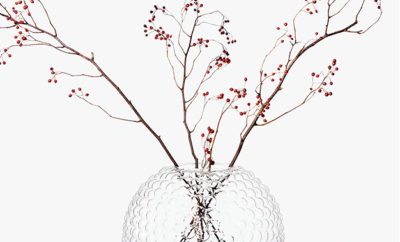 Angela Moore Photo
Angela Moore Photo
Feature
FROM THE EDITOR: What Comes Around
I SPEND FAR TOO MUCH OF MY LIFE observing the tangible world—architecture, furniture, objects—and yet, in my mind, it all springs from a philosophical base. For as long as I’ve been thinking about it, I’ve held a rather liberal view of what makes a building, a chair, a pot, a vase, a painting, a book, a concerto, a pas de deux, modern. So what is modern? The moment I asked myself that question, I started pondering the ancient Greeks— their stark, spare ruminations on a changing world that still influence the way we look at things, more than two millennia on. Then my mind wandered to the Romans, and their amazing structural innovations, many of which shape our built environment even today. Not long ago, I visited the archaeological sites of Brescia, Italy, and had a chance to look closely at the wide influence (one might also say conquests) of the Romans.
Most definitions of the modern era in design take it to the decades after the Industrial Revolution—to the Crystal Palace and the Eiffel Tower, which is fair enough. Modernism was (and still is) a response to changing technology, but it is much more than that. It is a philosophy, indeed, a way of looking at the world and decoding (and recoding) it—and that way of looking at the world is an expansive one, with room for wide interpretation.
In this issue, you’ll find stories that take us on a kind of journey through modernism—from Bernard Maybeck’s rather groundbreaking design for a Berkeley house completed in 1908 (which, if you’d shown me a photo without a name attached, I could easily have mistaken for a much later house by Michael Graves). You’ll read about some of the ways in which the Jazz Age brought modern design into our everyday lives (as is brilliantly elucidated in the exhibition of that name that goes this fall to the Cleveland Museum of Art from the Cooper Hewitt in New York). Our interview with Peter Kjelgaard of the Danish auction house Bruun Rassmussen takes us into the world of mid-century Scandinavian design (which is instantly identifiable as modern).
Then we head into somewhat uncharted territory, into worlds that are wildly creative and endlessly innovative. We look at the ever-imaginative work of Fernando and Humberto Campana, heroes of mine, I have to admit, as they explore new ways to express their Brazilian culture in particular and to reshape our thinking about design in general. The final three features in this issue head into the world as we will come to know it (or maybe as we should come to know it), a world in which scraps are repurposed and our discards become beautiful and significant textiles and objects, as is the case with the bench, below (notice the arches and think, momentarily, back to where they come from) designed by Max Lamb for Kvadrat. It’s a world I want to live in, just as long as I can still read Plato and look at an occasional Roman ruin and remember how many millennia it took us to become modern.













